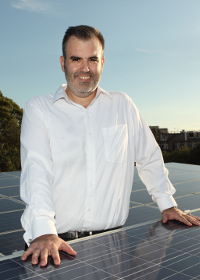The 2017 Federal Budget includes incentives for development of more gas supplies via pipeline construction. However, a focus on LNG exports only diverts the energy policy debate away from the transmission infrastructure crisis highlighted by the summer blackouts.
By Dr Liam Wagner, Griffith Business School
Overview
Australia has a gas crisis like no other point in its history, one of inaction. Natural gas has become the fool’s gold of 21stcentury Australia. The prospect of becoming one of the largest exporters in the world of Liquefied Natural Gas (LNG) was all too great a temptation for the state and federal governments.
The national interest tests placed on the foreign export of any resource are simply not effective at lowering the price of natural gas once international linkage has been achieved.
The only strategy available to the federal government is to increase supply, hoping this will ease domestic constraints. However, natural gas contract prices won’t be affected by short-term increases in supply when contract prices are calculated on expected future prices.
The current price being offered to industry for long-term contracts for supply may well be $20 per gigajoule (GJ), but the wholesale price rarely gets above $10/GJ.
The call for access to the ocean of gas by industry is simply a diversion from the real tactic of pressuring state governments into removing environmental regulation on gas development.
This year’s budget contains incentives for the development of more gas supplies via pipeline construction.
For example, the prospective development of the Narrabri pipelineis a way to enhance the development of previously halted gas fields. This pipeline project will form a long-term strategy to connect the eastern gas hub at Wallumbilla with Newcastle. This pipeline will facilitate the greater inter-state flow of gas to customers in areas like Kooragang Island such as Incitec Pivot and Orica.
With one proposed Newcastle LNG export plant stopped with the sale of land by Santos, one can only imagine if this pipeline will actually ensure supplies for industrial fertilizer producers.
Blackout in Budget
However, these budget measures are conspicuous in their failure to address the energy security elephant in the room. Up until now, Australia has been exceeding lucky without having had potentially catastrophic energy outage effects within living memory. But securing Australia’s energy future requires central planning over a 10 to 20 year time line.
The blackouts during South Australia’s record heat wave this summer highlight a system crying out for infrastructure investment. Currently we see a system which is unable to balance supply and demand during peak periods which have led to catastrophic failure. The power system is one that needs to be dependable for the economy to function.
Transmission infrastructure has largely been acknowledged as the key point of failure during the SA blackouts in 2016-2017 and the Tasmania energy crisis of 2016. Therefore, transmission infrastructure upgrades, reinforcing Australia’s National Electricity Market, are required to ensure the reliable flow of energy between the states. This is vital to maintaining our economy.
However, the recent announcement by the Premier of South Australia to go it alone and stimulate investment in gas and storage is an even worse outcome for the rest of Australia.
The purpose of a national electricity grid was to allow greater interchange of power generated by each of the states who have different resources to generate that power. Each state has a different portfolio of resources (such as wind, hydro, coal, gas and solar), which should be shared to balance supply with demand across the country. This, in turn, would improve the security of supply for energy.
However, without the extension cables to do it, there will be no sharing of renewable resources, making it even harder for Australia to act on climate change.

